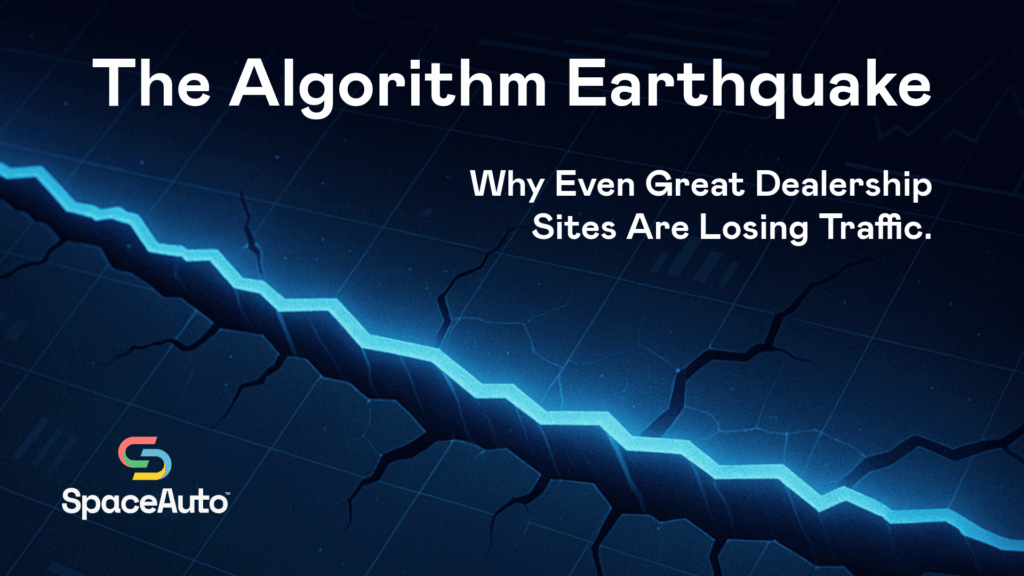
07/09/2025
The AI DIY Guide For Car Dealerships
No More Guesswork: Use AI to Turn Your Dealership’s Data into a Next-Quarter Plan
What’s the game plan for next quarter? If you’re a dealership owner or manager sitting on mountains of data (sales logs, CRM leads, web analytics, DMs, etc.) and still guessing your next move, here’s the answer: feed that data to a generative AI and ask for an action plan. Inexpensive professional tools like ChatGPT, Claude, or Google’s Gemini thrive on data. They’ll digest your information and spit out clear recommendations in minutes. In other words, your unbiased AI advisor is ready to connect the dots for you, no consultants or convoluted dashboards required.
Let’s dive in.
Why Use AI as Your Dealership’s Unbiased Advisor?
Generative AI models like OpenAI’s ChatGPT or Anthropic’s Claude have an uncanny ability to analyze data and answer questions in plain language. Unlike a human analyst, an AI has no bias or fatigue, it just crunches the numbers and finds patterns. With 95% of U.S. companies now using generative AI in some form, these tools have quickly become mainstream business aides. Most firms report the technology is meeting or exceeding expectations, with many seeing improved productivity and even revenue growth. In short, AI isn’t some fad; it’s a proven competitive edge.
Experience shows that giving AI access to your proprietary data unlocks valuable insights. For example, organizations that integrated ChatGPT with internal data found employees could ask natural questions and get instant answers from company records and metrics. No more digging through siloed systems, the AI fetches the facts for you. By combining your business’s first-party data (the info you already own) with the AI’s number-crunching power, you get contextually relevant answers unique to your dealership.
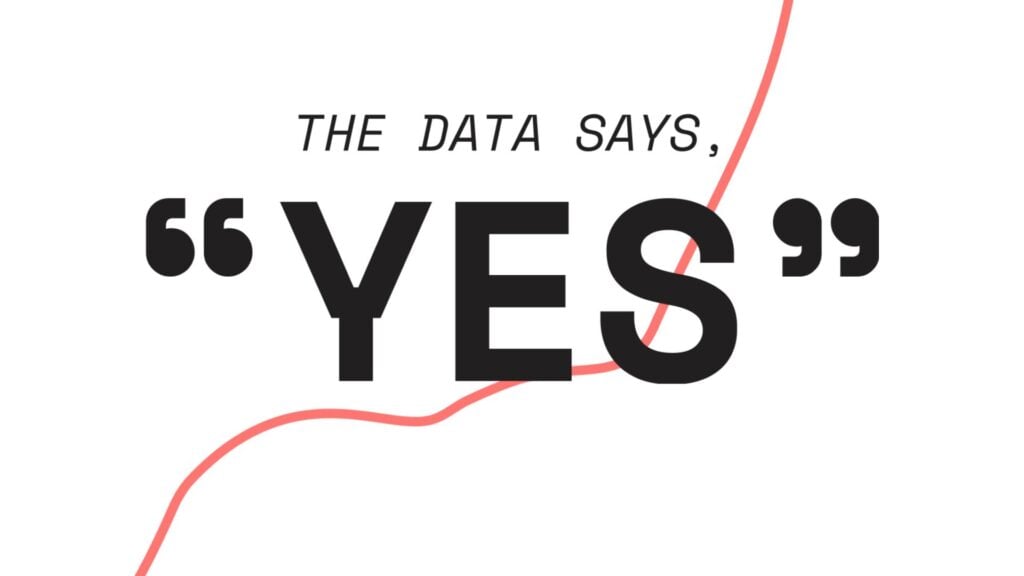
For a dealership, that means you can ask specific, high-value questions like “Which models should I stock more of next quarter?” or “Where are we losing potential customers in our sales funnel?” and get answers backed by your own data. The AI acts like a virtual consultant that’s intimately familiar with your operations, except it works 24/7, and it doesn’t charge by the hour. In fact, one industry expert notes that with ChatGPT available at ~$20 a month, “you don’t need to hire a consultant or spend thousands” on fancy tools to analyze your data academy.cognopia.com. It’s a filthy cheap way to get strategic insights.
Step 1: Gather and Export Your First-Party Data
Before you can ask the AI anything, you need to round up all that valuable data sitting in various systems. Dealerships generate data from multiple sources, customer relationship management (CRM) software for leads, dealer management systems (DMS) for sales and service records, website analytics for shopper behavior, social media and chat logs, etc. In fact, 92% of dealerships have data coming from 3 or more sources, and over half of dealers struggle to integrate all that information into one place cbtnews.com. No wonder a lot of data just sits unused in vendor silos.
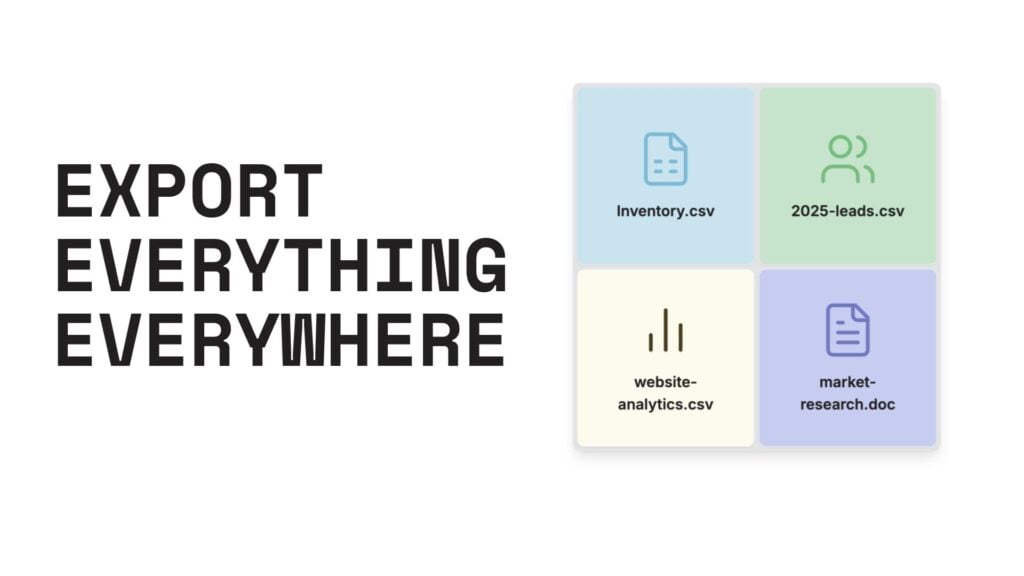
To break those silos, export your data from each vendor/platform. Most systems allow you to download your records as CSV or Excel files. For example:
- Pull last year’s CRM leads and appointments (with dates, customer info, vehicle of interest, etc.).
- Export your website analytics – e.g. traffic by page, conversion funnel stats (how many reached the credit app page, etc.).
- Download sales logs (models sold, pricing, days on lot) and service logs (repair orders, customer feedback).
- Save transcripts of chat or DMs inquiries.
Put these files together and label each dataset clearly (e.g. “2024_Q1_web_analytics.csv”, “2024_sales_log.xlsx”). This will help the AI understand what each data source is. Don’t worry if the data is messy, the AI can handle a bit of mess, or even help clean it if needed. (Pro tip: ensure no personally identifiable customer info or sensitive data is in what you’ll share, or use anonymization. Always handle data privacy carefully, even with AI.)
Disclaimer: Some of the examples in this article involve customer names, emails, phone numbers, VINs, credit details, and other personally identifiable information (PII). Always mask or tokenize such data before uploading it to any AI service. If you must work with raw PII, use a paid business deployment of OpenAI (ChatGPT Team or Enterprise, the OpenAI API with a zero-retention option, or Azure OpenAI). These plans keep your prompts and files out of model-training, let you set tight retention windows, and support encryption and audit logging. Sign a data-processing agreement, follow your regulatory obligations, and delete exported files once analysis is complete.
If you have a Customer Data Platform (CDP) that aggregates this information, great, you already have a head start. But as many dealers find, owning a CDP doesn’t automatically mean you’re leveraging it. The key is to actually use that first-party data rather than letting it collect digital dust. Remember, first-party data is gold: it’s accurate and exclusive to you, and it’s what will power personalized, AI-driven insights that your competitors can’t copy.
Why first-party data matters: With third-party cookies on the way out, dealerships must rely on their own data to understand and engage customerscbtnews.comcbtnews.com. A clean, unified dataset can reveal exactly who your customers are and what they want. However, the PureCars survey found only 13% of dealers felt their data was clean, and a mere 11% updated their customer data monthly. The result? Many dealer databases are plagued with duplicates, outdated contacts, and incomplete infocbtnews.com. Don’t let “dirty” data deter you, part of this exercise is about finally cleaning and using your data treasure trove to make smarter decisions.
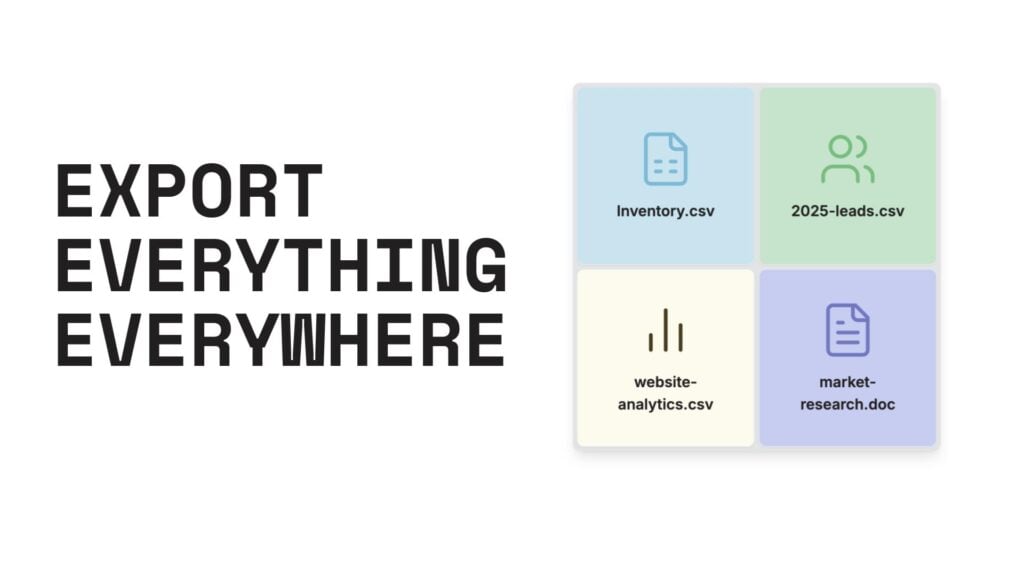
Step 2: Feed the Data to an AI Tool (No Coding Required)
Now that your data is gathered, it’s time to let the AI feast on it. Modern generative AI tools are surprisingly adept at ingesting and analyzing data. Not just text, but tables and numbers too. For instance, OpenAI’s ChatGPT has a “Data Analysis” (formerly Code Interpreter) feature that lets you upload spreadsheets and ask questions, all through a simple chat interface. You don’t need to write code or be a data scientist. Just attach the file and instruct the AI in plain English.
How to do it: In ChatGPT’s interface, start a new conversation and switch on “Advanced Data Analysis” mode (available to Plus subscribers). Upload one of your data files. Then, you can literally type something like: “Please summarize the key insights from this sales log” or “Which vehicle models had the slowest sales last quarter?” The AI will process the file and reply with answers, stats, even charts if helpful. You can do this for each dataset, or combine them. You might begin by analyzing each file separately (e.g. ask about web analytics trends, then CRM leads patterns). Once you have a handle on each piece, you can try giving the AI multiple files together or copying consolidated data into one prompt, then ask higher-level questions.
What about Claude or other models? Anthropic’s Claude 2, for example, boasts a 100K token context window, meaning it can ingest about 75,000 words (hundreds of pages) in one go. In practical terms, you could drop, say, your entire annual sales report and a couple of market research docs into Claude and ask it to analyze risks and opportunities, something Anthropic demonstrated with Claude reading a whole book in seconds. For your purposes, Claude could likely take all your exported CSV files at once (provided they’re not enormous) and answer questions spanning across them. Google’s Gemini is expected to have similar or greater capabilities once released. The key point: today’s AI can chew through more data in a minute than your team could in days. As Anthropic’s team put it, an average person takes 5+ hours to read 100K tokens of text and even longer to analyze, Claude did it in 22 seconds…
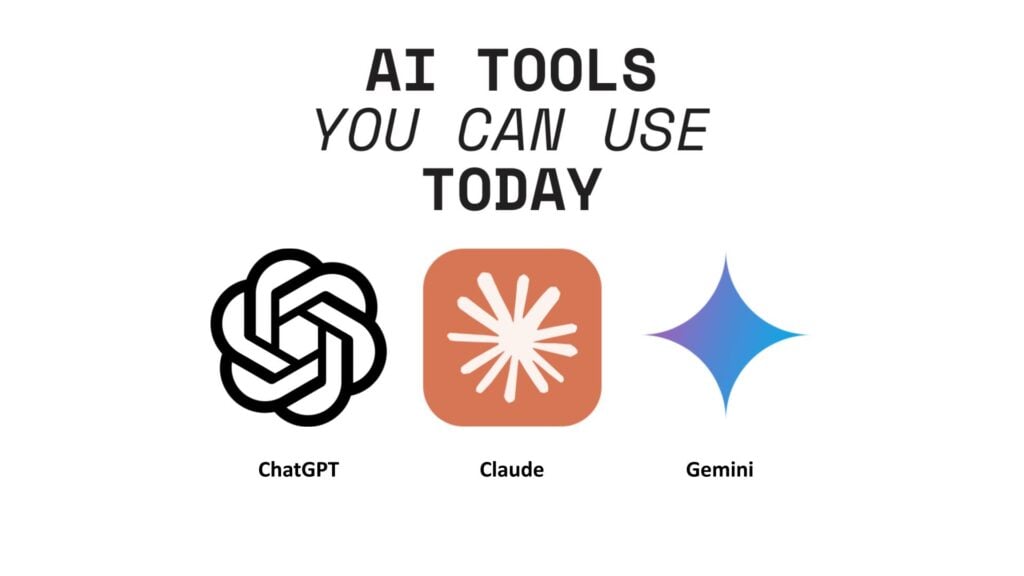
In short, don’t be shy about giving AI lots of data. Just ensure it knows what you’ve given it: provide a short description for each dataset if combining (e.g. “The following is last year’s sales log; after that is a list of web sessions by page…”). This context helps the AI draw the right connections. Also, be prepared to guide it: if the first answer is too generic, clarify your question or ask it to elaborate with specific metrics. Treat it like a conversation with an analyst who has all your data at their fingertips – because that’s essentially what it is.
Concerned about accuracy or hallucinations? When AI works directly off your provided data, its answers are grounded in those facts, reducing the chance of made-up info. You can further boost trust by asking the AI to show the data snippet it’s basing an insight on (e.g. “Which entries indicate that trend? Can you cite the rows?”). Many businesses find that coupling LLMs with internal data leads to direct, trustworthy answers from their own knowledge base. In our use case, since you supply the numbers, you can always cross-verify any suggestion the AI gives. It’s like verifying a consultant’s references – but much faster.
Step 3: Ask the Big Question: “What Should We Do Next Quarter?”
Here comes the fun part. With all your data loaded or accessible to the AI, you pose the ultimate question: “Given all this information, what should our dealership do next quarter to improve sales and performance?” This is a broad, open-ended prompt, and that’s okay. The AI will sift through trends and metrics in your data to generate a strategic answer. Essentially, it will output an executive summary or action plan drawn from the evidence.
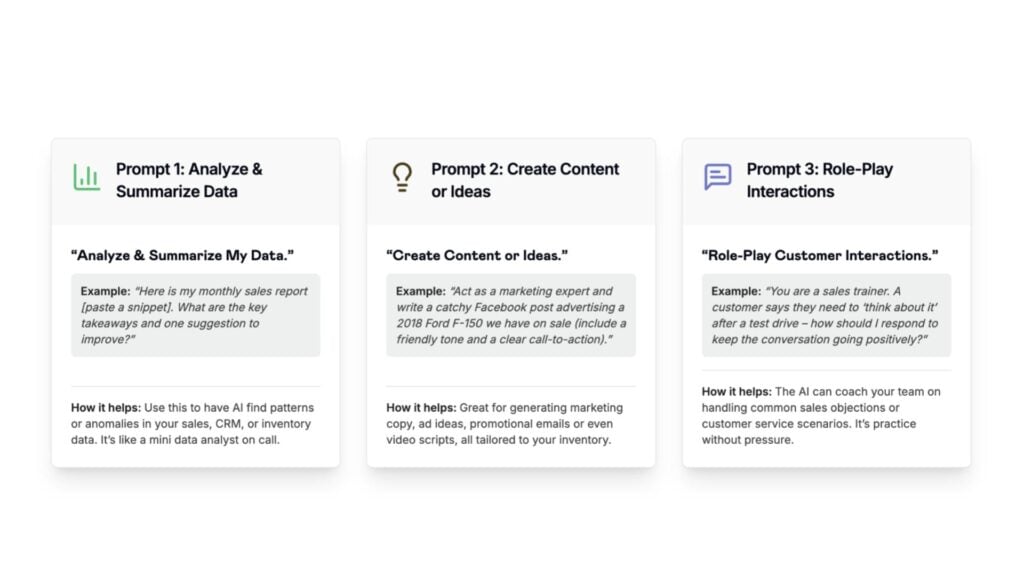
What might that look like? Let’s say you’ve fed in last year’s sales by model, your web traffic funnel, and lead response logs. The AI’s answer could surprise you with its specificity and insightfulness. For example, it might respond with something along these lines (illustrative example):
- Stock more trucks and SUVs, discount sedans: “Your sales data shows trucks and SUVs sold 20% faster than sedans, which had higher days-on-lot and frequent discounting. Demand is favoring larger vehicles. I recommend increasing truck/SUV inventory by 15% and plan incentives to clear out aging sedan stock.” This reflects AI doing demand forecasting on your data. (Indeed, many retailers use AI for exactly this – 44% of retailers now use AI for predictive analytics, leveraging sales trends to optimize stock levels.)
- Fix the online credit application page drop-off: “Website analytics indicate 30% of shoppers who begin the finance application quit before submission. This high drop-off suggests the form or process is a barrier. Simplifying the application or highlighting a *low APR offer could recapture these leads.”* This insight shows the AI pinpointing a funnel leak. It aligns with broader e-commerce trends, a significant chunk of online shoppers abandon checkout if it’s too long or complex (18% of U.S. shoppers have quit an order due solely to a complicated process). If your credit app feels like a chore, customers bail. The AI not only flags it, but also suggests a remedy (e.g. streamline it, or entice them with better financing deals to push through completion).
- Respond faster to high-value leads: “Your CRM logs reveal that leads interested in high-end SUVs often waited ~2 days for follow-up, and many went cold. Prioritize these leads with a sub-1-hour response time and personalized outreach. Consider that 82% of consumers expect a reply within 10 minutes when they inquire – faster response could dramatically improve your close rate on these profitable vehicles.” Ouch, the data shows we’ve been slow on the draw for our best leads. The AI here acts as a sales coach, citing how quick responses yield much higher conversion (even a one-minute response can boost conversions nearly 4X!). It’s a wake-up call backed by numbers.
- Personalize the sales approach (Netflix-style): “Leverage your customer data to tailor recommendations. For instance, repeat visitors looking at 3-row SUVs could automatically be shown content about family financing deals or accessories for road trips. Personalization drives engagement – e.g., Netflix’s AI-driven recommendations account for 80% of content viewed on their platform, and similar personalization in retail can increase customer satisfaction by 20%. Adopting this approach on your website and emails can boost leads and conversions.” Here the AI goes beyond operational fixes to suggest a marketing strategy: using your data to deliver custom experiences. It even references Netflix as the gold standard of using algorithms to keep people hooked (because you perhaps had notes about “Netflix-level customization”). The takeaway: treat each lead like Netflix treats viewers, with data-driven suggestions tuned to their tastes. More of those leads will convert if they feel “Wow, they really get what I want.” In fact, 42% of retailers are already using generative AI to power personalized marketing like this.
These are just examples, but they demonstrate the kind of pointed, actionable insights you can expect. Notice something important: none of these came from a hunch or generic best practice, they all tie directly to your data evidence. That’s the power of asking an AI trained on your information. It’s not spitting out cookie-cutter advice; it’s uncovering what your customers and operations are telling you needs to be done. It’s experience-based, factual, and tailored.
After the initial answer, you can keep the conversation going. The AI’s plan said “promote low-rate deals” – follow up: “What low APR financing should we offer, and how to present it for maximum effect?” If it flagged slow lead responses, ask: “Give me a step-by-step process to respond to leads within 10 minutes, even after hours.” You’ll get more detailed tactics, perhaps suggesting an automated chatbot after hours or a rotation for internet sales managers. Think of it as an interactive brainstorming session with a super-informed partner. You ask, it answers, you drill down further, all based on data, not guesswork.
No Dashboards, No Guesswork: How AI Outsmarts Traditional Analysis
At this point you might wonder, “Couldn’t I have figured some of this out myself? We do look at our monthly reports…” Sure, but consider how much faster and more comprehensively the AI reached the conclusions. Typically, you or your team might spend days poring over Excel sheets or configuring BI dashboards, and still miss key correlations. AI flips that script: it handles the heavy analytics lifting in seconds and delivers a plain-English narrative of what’s going on.
To appreciate the difference, let’s break down what just happened in our scenario:
- Speed and Scale: The AI analyzed a year’s worth of sales across dozens of models, web engagement of thousands of visitors, and hundreds of lead records simultaneously. Humans get overwhelmed at that scale; AI doesn’t blink. As noted earlier, what’s a week’s reading for us is 22 seconds for an AI. This means you get insights while they’re still timely enough to act on (no more “last quarter’s hindsight”, you’re planning in near real-time).
- Pattern Recognition: AI doesn’t come with preconceived notions. It will surface patterns you might not think to check. Maybe you assumed sedans were fine, but the data showed they’re stagnating. Or you never realized so many people started the finance app but didn’t finish. A human might overlook these without a hypothesis to test; AI finds them organically. It’s like having a tireless auditor comb through every line of data for notable trends.
- Natural Language Clarity: Instead of cryptic charts or pivot tables, the output was a straightforward list of recommendations with reasoning. This is huge for decision-making. You can practically copy-paste the AI’s explanation into your next team meeting memo. By using natural language, AI makes data insights accessible to anyone, you don’t have to be a data analyst to understand what to do next.
- No Guesswork or Gut Feel: Perhaps most importantly, the plan is evidence-based. There’s no “I think we should do more Facebook ads because I feel like it.” It’s all, “We should do X because the data shows Y.” When you execute such a plan, you can be confident you’re addressing real issues, not chasing phantom problems. In other words, you transition from a gut-driven business to a data-driven business. Given the biases and blind spots humans have, taking guidance from an unbiased AI that only cares about the facts can be a refreshing change.
Does this mean dashboards and BI tools are obsolete? Not entirely, they still have their place for monitoring KPIs regularly. But for big-picture strategy and problem-solving, interacting with your data through AI is a game changer. It’s proactive (finds the “why” behind metrics) rather than just descriptive. And it’s a lot quicker than waiting on the analytics team to build a report. As one consultant put it, AI can analyze large datasets to identify trends and enable data-driven insights far more quickly, freeing up humans to focus on higher-level strategy.
From AI Insight to Action: Execute, Learn, and Repeat
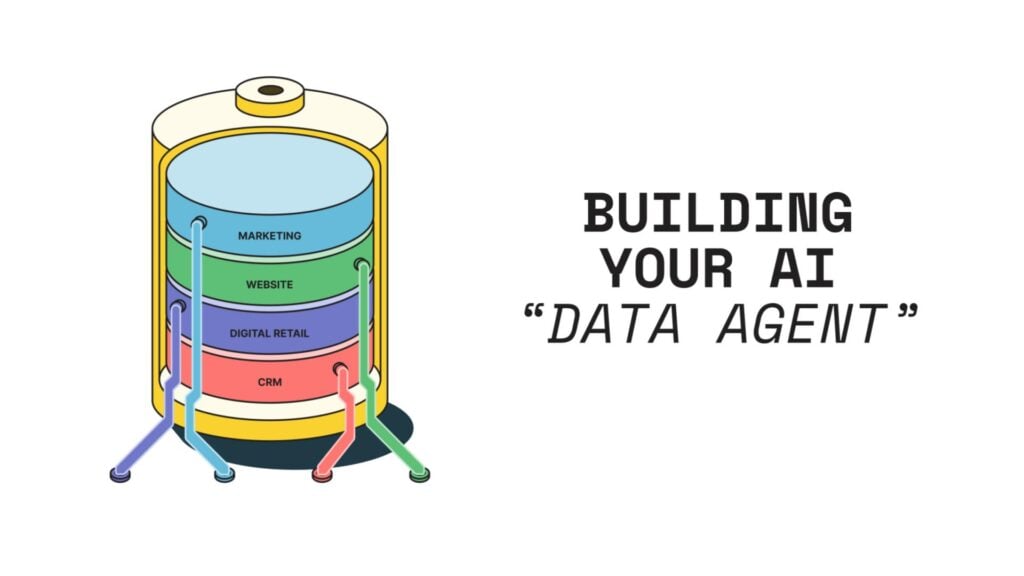
Having an actionable plan is fantastic, but it’s only as good as your follow-through. Now it’s on you and your team to execute those recommendations. Stock more of the high-demand models, adjust your pricing or incentives, revamp that credit application page, set up procedures for rapid lead response, and personalize your marketing outreach. Many of these changes can be implemented without massive expense, they’re about working smarter with the resources you have, guided by your newfound data clarity.
As you implement, keep using the AI as a sounding board or coach:
- Ask follow-up questions for each recommendation: “How exactly should I simplify the finance form? What info can I remove or save for later to reduce friction?” The AI might suggest practical tweaks (e.g. make the form multi-step, pre-fill known info, add a progress bar, etc., backed by UX best practices).
- Get creative ideas: “What personalized offers can we send to SUV intenders versus sedan intenders?” The AI can draft a few example targeted messages or campaign ideas for you. It can even help write the actual content, email drafts, ad copy, all tailored to the insights (e.g. emphasizing low APR for those worried about financing).
- Plan contingencies: “If the demand shifts (say gas prices spike and suddenly compact cars are popular again), how should we adjust?” The AI can analyze hypothetical scenarios or identify leading indicators in your data to watch.
- Training staff: You could even use the AI to role-play a quick training outline, “Make a checklist for sales reps to improve response time and personalize their communication.” This ensures the team knows how to act on the insights (like responding within 10 minutes and mentioning relevant vehicle features based on the lead’s interest).
The more you interact with the AI, the better it understands your needs. It’s not a one-off tool; think of it as an ongoing advisor. Each quarter (or each month even), you can rinse and repeat: feed updated data, ask what’s new, what’s working, what’s not, and adjust course accordingly. This creates a powerful feedback loop of continuous improvement driven by real data.
And because the AI’s knowledge base is essentially your data and whatever you feed it, over time you might even expand its “training”, include external data like market trends, economic indicators, or OEM announcements to see how those factors interplay with your local dealership data. For instance, if interest rates change or new models launch, your AI analysis can incorporate that context and refine the advice (much like a top-notch consultant would, but instantly and for free).
Ready to Upload, Ask, and Act
The data has always been ready to tell its story, it just needed someone to listen. Now you are ready, armed with AI as your listening device. By exporting your data, engaging an AI assistant, and asking the right questions, you’ve unlocked a clear plan for next quarter (and beyond). No more flying blind or relying solely on gut instinct. You have concrete recommendations derived from evidence: stock this, fix that, focus here, trim there.
The next step is simple: Act on it. Take those AI-driven insights and implement them. Then keep the loop going, feed the results back to your data pool, and let the AI assess the impact when the time comes. This agile, data-centric approach will keep you ahead of the curve. You’ll spot opportunities and issues faster than competitors still stuck in the old model of retrospective analysis and “experience tells me…” guesses. In a fast-changing market, that’s a decisive advantage.
So, to recap in an answer-first fashion: How do you decide what to do next quarter? By connecting the dots in your own data with a little help from AI. It’s like having a super-intelligent, unbiased co-pilot for your business decisions. Export, upload, ask, and act. The era of AI-assisted decision making is here for the auto industry, and those who leverage it will drive ahead. The data-driven plan is in your hands now. Go make it happen.
Sources:
- Anthropic, Introducing 100K Context Windows – On Claude AI’s ability to ingest huge documents and analyze/summarize them in secondsanthropic.comanthropic.com.
- Locusive AI, How to Use ChatGPT with Your Company’s Data – Benefits of connecting LLMs to internal data for instant, conversational insightslocusive.comlocusive.com.
- Bain & Co., Generative AI Survey 2025 – 95% of U.S. companies are using generative AI, with most seeing it improve productivity (and many using it for growth)bain.combain.com.
- Shopify Plus, AI in Retail (2025) – 44% of retailers use AI for demand forecasting, optimizing stock via sales data analysisshopify.com; 42% use AI for personalized marketing (like Netflix-style recommendations)shopify.com.
- Stratoflow Blog – Netflix’s recommendation engine personalizes content to user tastes, with 80% of viewed content coming from those AI-driven suggestionsstratoflow.com; McKinsey study shows effective personalization can boost customer satisfaction 20%stratoflow.com.
- PureCars/CBT News – Survey of dealers finds 52% struggle to integrate data sources, indicating underutilized first-party data opportunitiescbtnews.com. Many dealer CRMs/DMS have inaccurate or duplicate data, highlighting need for data cleaning and consolidationcbtnews.com.
- CBT News, Lead Response Times – 82% of consumers expect a response within 10 minutes, and a 1-minute response can increase conversion by up to 391%cbtnews.com. Fast follow-up is crucial to capture interested car shoppers.
- Baymard Institute – ~18% of U.S. online shoppers have abandoned an order due to a checkout process being too long or complicatedbaymard.com. Simplifying online forms (like credit applications) can reduce abandonment.
- Casebasix Consulting – ChatGPT can rapidly analyze data and generate insights, complementing or speeding up tasks traditionally done by consultantscasebasix.com. This suggests small businesses can self-serve insights that used to require external help.
